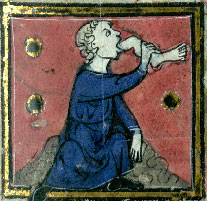
Today we plunge into some hard-core scholasticism, as we hear Thomas Aquinas wrestle with the thorny question: “If all dead bodies are resurrected at the Last Judgment, what happens to the bodies of cannibals, whose bodies are made up of the flesh of those they have eaten, who also need to be resurrected?” We also wrap up with a reflection on George Romero and the zombie apocalypse.
Today’s Text:
- Thomas Aquinas, Summa Theologia, Supplement, Q. 80, Art. 4. Available at http://www.newadvent.org/summa/5080.htm#article4, which reproduces the text of the Second and Revised Edition, 1920, literally translated by Fathers of the English Dominican Province.
References:
- Bynum, Caroline Walker. Fragmentation and Redemption: Essays on Gender and the Human Body in Medieval Religion. Zone Books, 1992.
- Murphy, James Jerome. Rhetoric in the Middle Ages: A History of Rhetorical Theory from Saint Augustine to the Renaissance, University of California Press, 1974.
Image: Detail from Manuscrito Valenciennes BM MS 320, f. 45.
We conclude our three-part look at the remains of St. Cuthbert with James Raine’s account of his 1827 exhumation of Cuthbert’s body and the recovery of some extraordinary early medieval artifacts.
Today’s Texts:
-
Raine, James.
A Brief Account of Durham Cathedral, with Notices of the Castle, University, City Churches, &c. Newcastle: Blackwell & Co., 1833.
Google Books. Web. 6 Apr, 2016. [Available at
Google Books.]
-
Raine, James.
St. Cuthbert, with an Account of the State in Which His Remains Were Found upon the Opening of His Tomb in Durham Cathedral, in the Year MDCCCXXVII. Geo. Andrews, 1828. [Available at
Google Books.]
Other References:
- Battiscombe, C.F., editor. The Relics of Saint Cuthbert. Oxford UP, 1956.
- Reginald of Durham. Reginaldi Monachi Dunelmensis Libellus de Admirandis Beati Cuthberti Virtutibus Quae Novellis Patratae Sunt Temporibus, edited by James Raine, publication of the Surtees Society, J.B. Nichols and Son, 1835. [Available at Archive.org.]
Image: Portrait of James Raine by William Walker (National Portrait Gallery, London – via Wikimedia Commons).
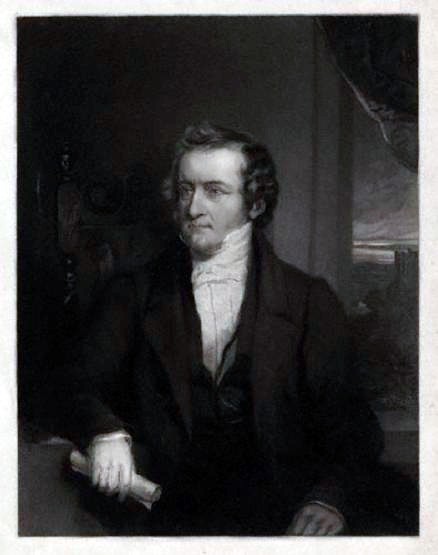
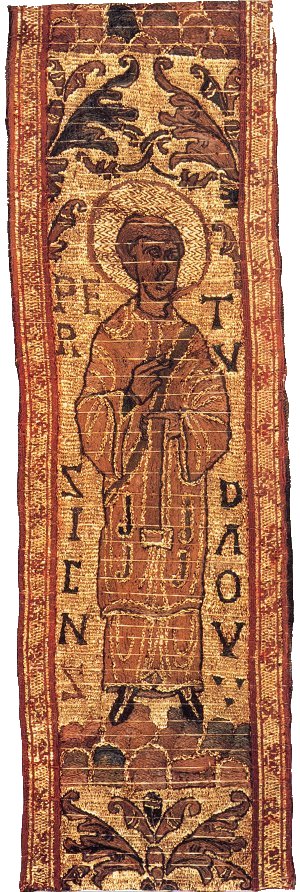 In Part II of our “Cuthbert’s Body” series, we hear Reginald of Durham’s description of what was found inside Cuthbert’s coffin in the investigation preceding the Cuthbert’s translation in 1104, and we consider what incorruptibility meant for a medieval audience.
In Part II of our “Cuthbert’s Body” series, we hear Reginald of Durham’s description of what was found inside Cuthbert’s coffin in the investigation preceding the Cuthbert’s translation in 1104, and we consider what incorruptibility meant for a medieval audience.
This Episode’s Texts:
- Selections from Reginald of Durham. Translated by James Raine, St. Cuthbert, with an Account of the State in Which His Remains Were Found upon the Opening of His Tomb in Durham Cathedral, in the Year MDCCCXXVII. Geo. Andrews, 1828. [Available at Google Books.]
Other References:
-
Battiscombe, C.F., editor. The Relics of Saint Cuthbert. Oxford UP, 1956.
-
Bynum, Caroline Walker. Fragmentation and Redemption: Essays on Gender and the Human Body in Medieval Religion. Zone Books, 1992.
Image: Detail from Cuthbert’s maniple, recovered in 1827, depicting Peter the Deacon.
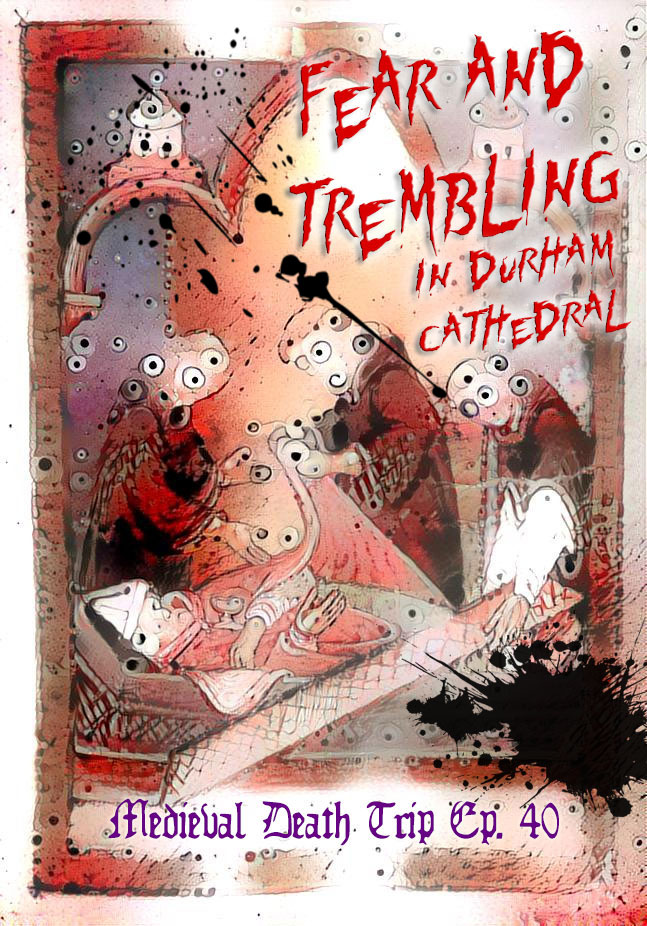 This episode is the first in our three-part series looking at encounters with the remains of St. Cuthbert, starting in this installment with a quick look at the discovery that his body had not decayed in 698, eleven years after his death, as recounted by the Venerable Bede, and then taking a longer look at the so-called “Anonymous Account” of the inspection of his body during his translation into Durham Cathedral in 1104.
This episode is the first in our three-part series looking at encounters with the remains of St. Cuthbert, starting in this installment with a quick look at the discovery that his body had not decayed in 698, eleven years after his death, as recounted by the Venerable Bede, and then taking a longer look at the so-called “Anonymous Account” of the inspection of his body during his translation into Durham Cathedral in 1104.
This Episode’s Texts:
- Bede. The Life and Miracles of Saint Cudberct. Church Historians of England, edited and translated by Joseph Stevenson, vol. 1, part 2, Seeley’s, 1853, pp. 546-603. [Available on Google Books.]
- The Anonymous Account. Translated in James Raine’s St. Cuthbert, with an Account of the State in Which His Remains Were Found upon the Opening of His Tomb in Durham Cathedral, in the Year MDCCCXXVII. Geo. Andrews, 1828. [Available at Google Books.]
Other References:
Image: Detail of the opening of Cuthbert’s tomb from British Library MS 39943 remixed with the art of Ralph Steadman via Google’s Deep Dream.
Additional Show Notes [Coming soon!]
This episode we’re looking at lists: a list about list, a text akin to an early modern police blotter, and a catalogue of scholarly sessions from Kalamazoo, where I’ll be heading off to this week!
This Episode’s Texts:
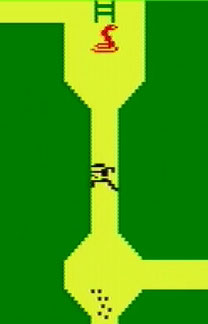 This episode we slither into spring with several tales of serpent shenanigans as well as science (or it’s medieval equivalent).
This episode we slither into spring with several tales of serpent shenanigans as well as science (or it’s medieval equivalent).
This Episode’s Texts:
-
Isidore of Seville. The Etymologies of Isidore of Seville. Translated by Stephen A. Barney, W.J. Lewis, J.A. Beach, and Oliver Berghof with Muriel Hall, Cambridge UP, 2006.
-
The Life and Miracles of St. William of Norwich, written by Thomas of Monmouth and translated by Augustus Jessopp and M.R. James. Cambridge UP, 1896. [Available on
Google Books.]
-
Richard de Fournival. Master Richard’s Bestiary of Love and Response. Translated by Jeanette Beer, U of California P, 1986.
-
Simeon of Durham.
Simeon’s History of the Church of Durham,
Church Historians of England, edited and translated by Joseph Stevenson, vol. 3, part 2, Seeley’s, 1855, pp. 619-711.
Google Books.
- Symeon of Durham. Libellus de exordio atque procursu istius, hoc est Dunhelmensis, ecclesie: Tract on the Origin and Progress of this the Church of Durham. Edited and translated by David Rollason, Oxford UP, 2000.
-
Image: Snake encounter and world map from the Intellivision game Advanced Dungeons and Dragons.
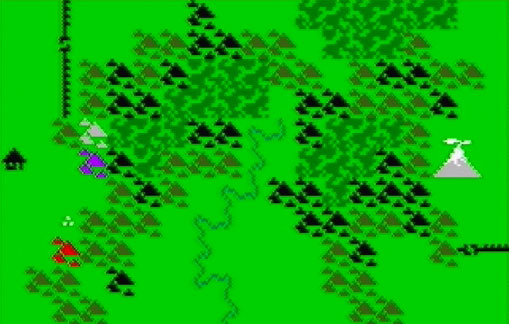
 Today we plunge into some hard-core scholasticism, as we hear Thomas Aquinas wrestle with the thorny question: “If all dead bodies are resurrected at the Last Judgment, what happens to the bodies of cannibals, whose bodies are made up of the flesh of those they have eaten, who also need to be resurrected?” We also wrap up with a reflection on George Romero and the zombie apocalypse.
Today we plunge into some hard-core scholasticism, as we hear Thomas Aquinas wrestle with the thorny question: “If all dead bodies are resurrected at the Last Judgment, what happens to the bodies of cannibals, whose bodies are made up of the flesh of those they have eaten, who also need to be resurrected?” We also wrap up with a reflection on George Romero and the zombie apocalypse.







Recent Comments